Author: EVAI

Rivians getting native text messaging in 2025, but not via CarPlay
- Rivian’s chief software officer confirmed the company’s EVs will get text messaging capabilities in 2025
- The text messaging solution will utilize native text-to-speech via a new voice tech stack
- Google Cast and native YouTube application will come in the next software update
Two years ago, Rivian Chief Software Officer Wassym Bensaid told owners and fans that the automaker was working on text-to-speech text messaging abilities.
Two years later and that functionality hasn’t appeared in any Rivian electric vehicles.
In a fireside chat with media and owners in November at the Rivian Space in Los Angeles, Bensaid said native text messaging abilities will come to Rivians in 2025.
Bensaid admitted Rivian has “made several attempts for text to speech,” but the problem, according to Rivian’s CSO, is the existing solutions available in the industry “are not great.”
Sign up for Newsletter
A solution was in place and ready to ship, but during final testing Bensaid refused to sign off and said “no, we cannot ship,” because it was “fragmented.” The exec said the issue was especially prevalent for Android users, and the team wants to ensure both iOS and Android—despite most Rivian owners apparently having Apple devices, according to Bensaid—have a seamless experience.
Another issue with previous attempts included missing texts. “Supporting group chat is really a nightmare,” Bensaid said. He noted emojis or reactions are also “really a nightmare.”
The problem with today’s solutions is “it’s not a rich experience,” Bensaid said.
Bensaid said the team’s working on a new voice tech stack that will redefine the experience. Text-to-speech capabilities will come on top of this new software stack, and he’s been testing early prototypes for weeks. “It’s way, way different. I mean, honestly, it’s the type of experience that I want to really have,” Bensaid said.
The new voice tech stack will coexist with today’s Alexa implementation, according to Bensaid. The exec noted he sees the future as everything being accessible through the touchscreen and voice, not just one or the other. Bensaid noted that AI offers a tremendous opportunity in this regard.
But it won’t only be text-to-speech. There will be a physical interface on the screen to interact with text messages. Bernsaid wouldn’t elaborate on what that might look like or how it’ll operate aside from noting “it’s really a nice interface.”
“So my message is, please be patient with us,” Bensaid asked of owners. He went on to say Rivian’s implementation will be better than anything else in the industry today.
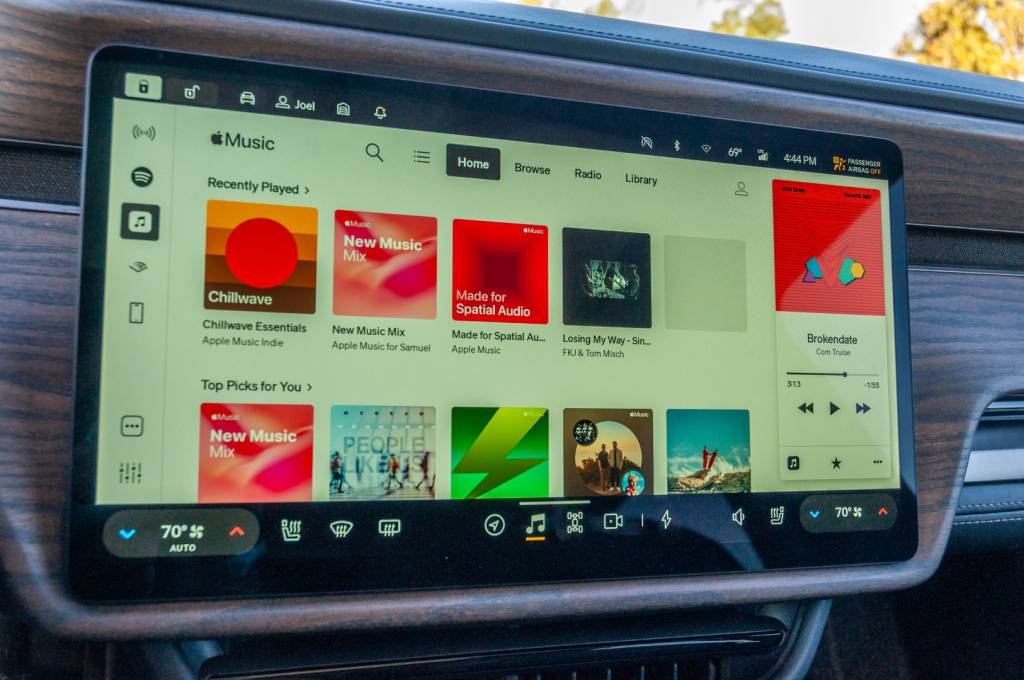
2025 Rivian R1S
But that’s all to come. The next software update, according to Bensaid, will enable Google Cast along with native YouTube implementation. Google Cast will come with the support of more than 3,000 applications, except Netflix, which Rivian is still working with Google on, according to the software exec. Dolby Surround Sound is in the cards, but no timeline was given. Rivians already feature Dolby Atmos when using the new Apple Music app.
For the time being, Google Cast will only be on the front screen, but Bensaid said the team’s looking at how to enable it for rear screens. Today, the only rear screen Rivian offers is a small screen mounted on the back of the center console, like in Teslas. Bensaid said enabling Google Cast for the rear seats would make it so the feature could be used by passengers while driving.

Sound check: 2024 Dodge Charger Daytona EV shakes like V-8 Hellcat
- Fratzonic Chambered Exhaust was developed to get V-8 sensory experience into EVs
- All 2024 Dodge Charger Daytona EVs will include it
- Hardware and energy use is similar to subwoofer, generates V-8 sound and vibes
Paradoxically, to get a new Dodge muscle car with the signature V-8 sound, you’ll need to go with the EV.
The propulsion systems of modern electric vehicles are naturally smooth and near-silent, and some EV enthusiasts have come to know and love that. Meanwhile, Dodge has phased the V-8 out for its muscle car lineups. But the team behind the 2024 Dodge Charger Daytona EV, which is due to go on sale in its launch Scat Pack form within weeks, aims to show that they might be able to win over traditional enthusiasts, too—by engineering a V-8 sensory experience back in.
What does it take? In a recent conversation with Kevin Hellman, senior vice president of product for Stellantis’ Dodge brand vehicles, on the floor of the LA auto show, Green Car Reports learned that the much-touted “bone-shaking” Fratzonic Chambered Exhaust makes more than the sound of muscle-car rumble. It adds some finely calculated noise, vibration, and harshness (NVH) back into the mix.
[embedded content]
Sign up for Newsletter
Hellman said that the rumble is one you’ll be able to feel from the driver’s seat, and the team behind the Charger Daytona wanted an impression that, when you start the vehicle, would leave no doubt whether or not the power was on.
In a quick startup, rev, and power-down—out on the auto-show floor, which would have never been allowed with a real V-8—Hellman demonstrated to us that it sounds the part. But as for the rumble from the driver’s seat, and the whole experience, you’ll have to wait another week or so for first drive impressions.
“Your butt tells you the car’s on,” he summed, underscoring that it’s the vibration that this system adds back to the experience that makes it something far greater than the in-cabin noise makers that some electric vehicles offer. “And quite honestly, when you’re driving a car fast and driving around a track, everything else, that visceral feeling is great feedback.”
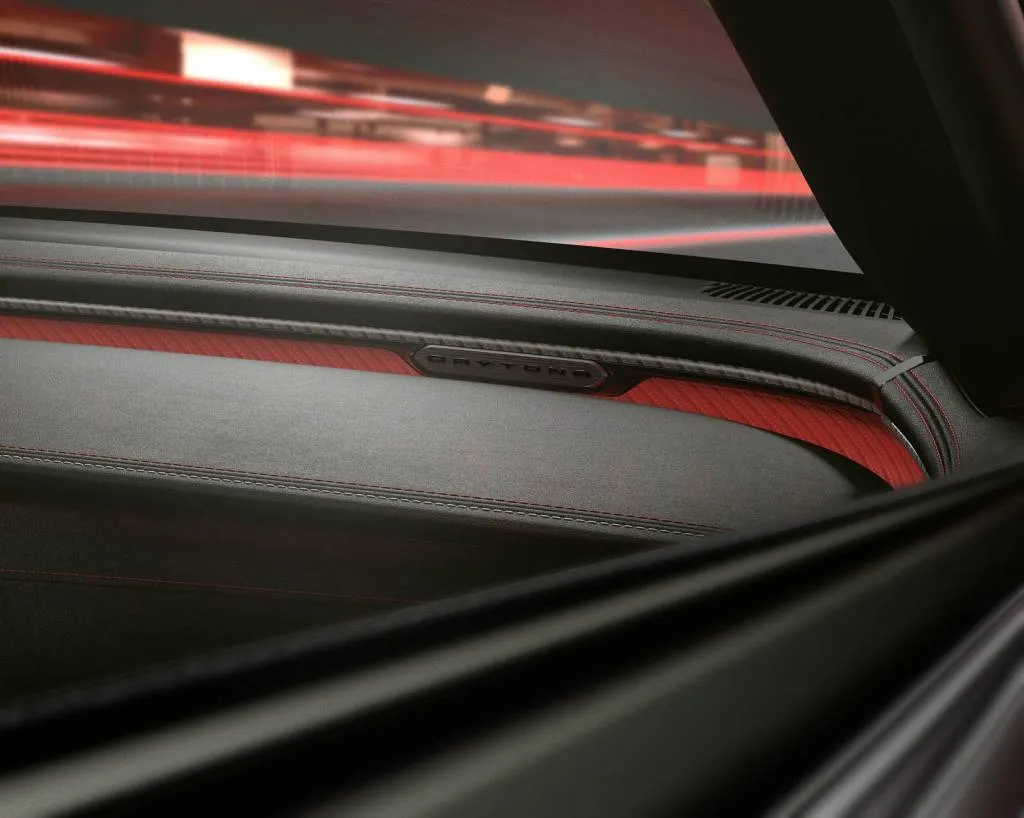
2024 Dodge Charger Daytona
Fratzonic generates more NVH for an EV?
To do that, the Fratzonic Chambered Exhaust is effectively a noise-and-vibration-generating unit. Four “custom-designed elastomer isolator bushings” support the system and operate much like those on an engine’s exhaust system. Inside there are two “bespoke, high-efficiency extreme bandwidth transducers”—which Hellman broke down to a combination of standard drivers plus two so-called passive radiators (essentially a driver without the magnet). It’s using those passive radiators—”passivators,” Hellman nicknamed them—”to get that low, low growl that’s the rumble that you would expect from a muscle car,” he said.
Sign up for Newsletter
All said, the materials that go into the Fratzonic unit are “very similar” to what’s built into a subwoofer box, according to Hellman, albeit with a design that’s patented around how those passivators and speakers work together within its volume to create the sound. The physical volume of the system is about 36 liters—about the size of a 10-gallon gas tank, or a smallish carry-on suitcase, at just 1.3 cubic feet.
That’s most but not all of it. There is some “active noise management” of the system throughout the vehicle, including some tweaks from the sound system, Hellman said, but about 90% of what the driver is hearing is coming from that external unit at the back of the car.
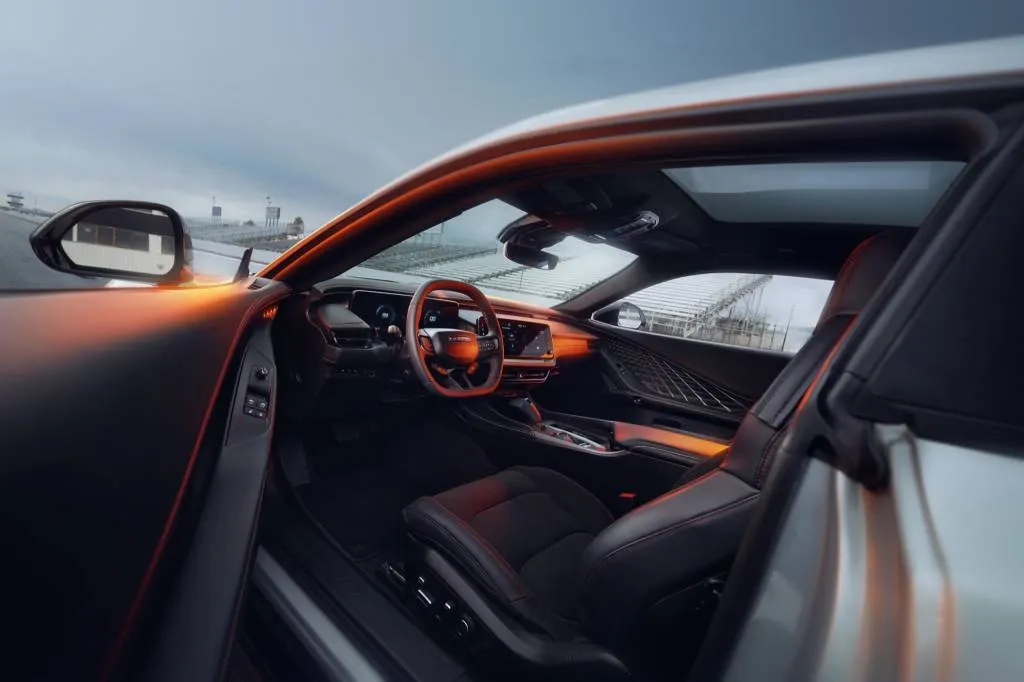
2024 Dodge Charger Daytona
Up to 126 dB, but Charger V-8 growl is what matters
The sound isn’t just for those inside the EV. The team’s functional objective for the system was to be as loud as the outgoing Hellcat—which is a screaming-loud 126 decibels. But it really came down to getting the tone right with the engine’s low notes, Hellman explained, as you can play a really high-pitch sound and hit 126 decibels rather easily.
The EV had to sound like a Dodge V-8, the team decided early on, so it started out with a lot of sampling of historical Hemi V-8s, 426 V-8s, modern Hemis and Hellcats, and even the 1960s Chrysler Turbine car, folding those sounds into the output. It then asked all the participants a chance to evaluate each theme on how they liked the way it starts up, shuts down, revs, and runs. And they asked whether it sounds or feels like a Dodge.
Sign up for Newsletter
The system does involve psychology and being perceived as an inspiring sound, not a cheap imitation, so Dodge spent some time clinicking the solution. “We did a lot, and the agency we worked with put together some themes from mild to wild muscle, to crazy futuristic space-ship kind of things, and we clinicked it at our vehicle clinics, and then we took it to SEMA,” said Hellman.
What results, he explained, is the low-frequency growl, with a bit of a futuristic edge. Meanwhile, the waveforms don’t resolve at the same time, so as to give it some of the organic complexity of the original.
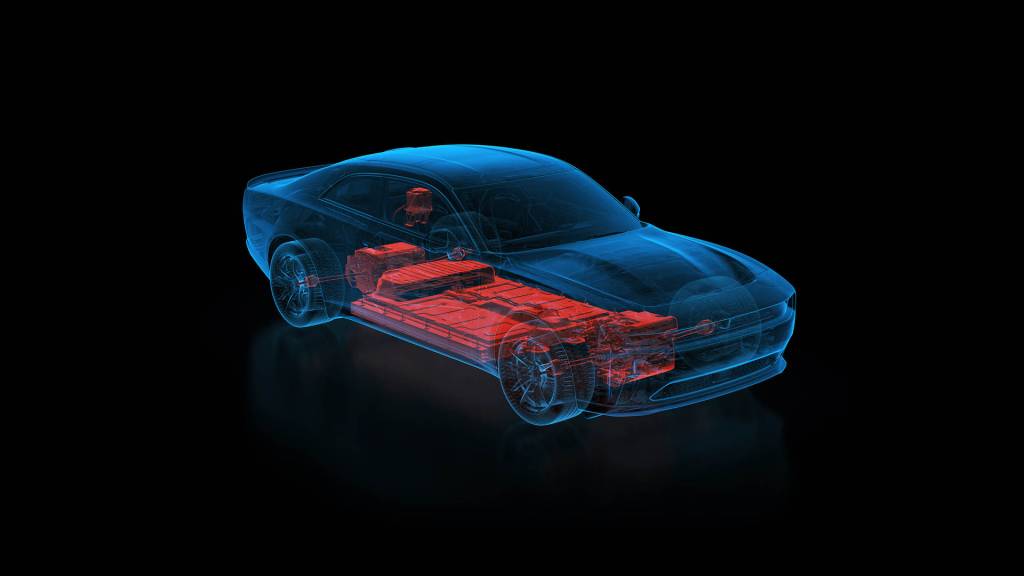
2024 Dodge Charger Daytona
While the Daytona EV team avoided the super-futuristic route, there are plenty of EVs that have gone that way. The Ford Mustang Mach-E sounds, for instance, were influenced by classic 1980s sci-fi cinema, including “Blade Runner” and Batman’s Tumbler. But they’re only for those inside the vehicle.
“When you’re out driving the car you may notice that there’s a familiarity of the sound that you can’t quite put your finger on,” he explained. “That’s because it operates at 38 Hz, which is very close to the firing order of a Hemi.”
Location, location, location is part of this, too. In this acoustic puzzle the sounds were all tuned to sound the most like a natural V-8 to the driver—although they’re pretty on-target from the outside of the car, based on the auto-show sound check.
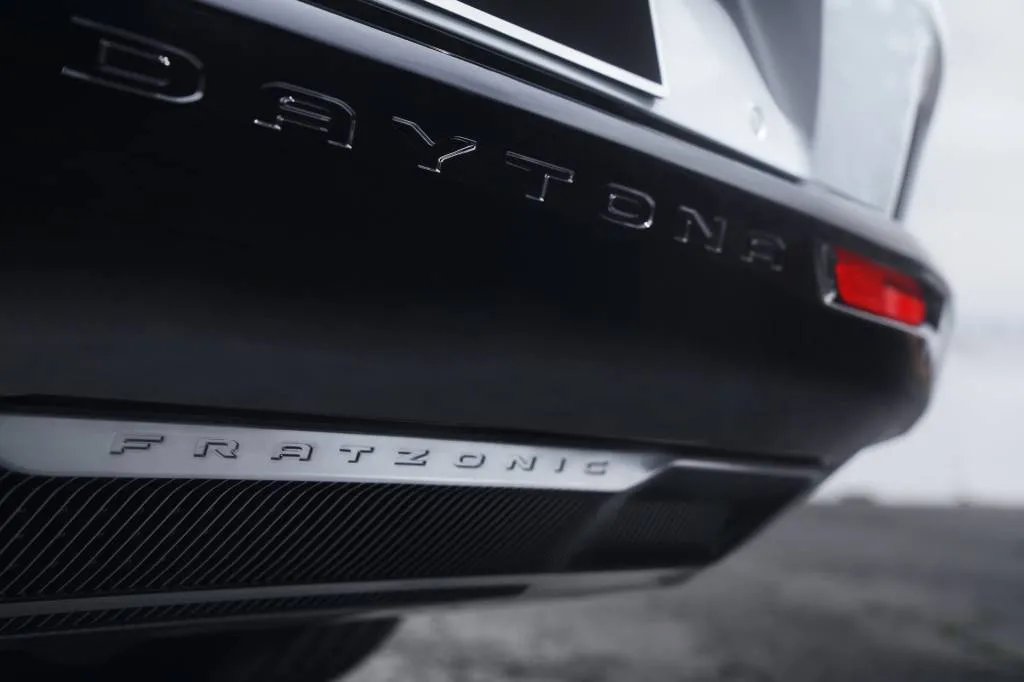
2024 Dodge Charger Daytona
Fratzonic solves an acoustic-physics puzzle
As with the sound of the Hellcat and a lot of the vintage muscle cars that preceded it, the project became larger than life. Hellman said that the Fratzonic project started with a simple: “This car’s gonna make sounds all the other EVs aren’t,” but it soon pivoted toward a deeper V-8 feel.
Tying in, briefly, a lesson in linguistics and acoustic physics: You have to use breath to make vowel sounds, and each of those vowel sounds can be seen as a particular band of frequencies. After I heard, in brief, Fratzonic in use on the car, when idling and revving, I can say that it’s getting all those growly vowels in a V-8 idle that make the difference.
Stellantis NVH engineers in Michigan—essentially the same people who would tune an exhaust in a real-V-8 muscle car—together with an unnamed agency that works on sound and special effects for Hollywood movies, created essentially six instruments. Then for this system, they trained them to play at different levels and variations depending on variables fed through the car.
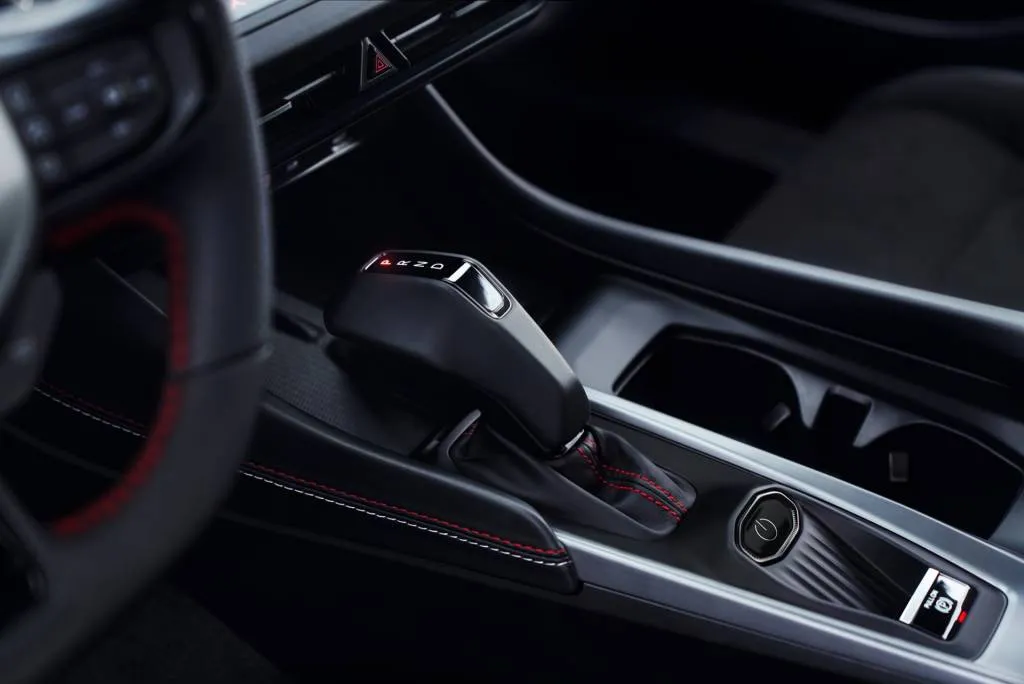
2024 Dodge Charger Daytona
The list of parameters influencing the sound the vehicle actually makes is long, and includes the speed of the vehicle, the speed of the motors, the throttle position, the load, the regen mode, and the drive mode.
In general, Hellman says, a change to a more aggressive drive mode will drive up the amplitude and volume of the sound. Auto is the baseline, while Sport gets a little louder, and Track and Drag get the loudest.
You can also turn the sound completely off if you don’t like it. Or there’s a Custom drive mode that can dial a different level in for each of the modes as desired.
Adding that NVH efficiently and reliably
The noise-and-vibration-making equipment will be included on all examples of the upcoming 2024 Dodge Charger Daytona EV. When I pushed about the cost of the system, Hellman would only say that “we treat it like any other component on the vehicle that we believe is part of the experience.”
The system is powered by a dedicated 600-watt amplifier, and energy consumption is comparable to that of a high-end audio system. The design of the Charger Daytona already likely earns back some of that in the aero-savvy of its front R-Wing setup that guides air for efficiency or downforce.
When asked whether there were challenges in making the Fratzonic solution weatherproof from puddles, road salt, and the like, Hellman said without hesitation, but without further comment: “Oh yeah!”
Fratzonic for Ferrari…or Maserati?
As for whether Stellantis would be able to tune this system for a completely different type of vehicle—like a Maserati or Ferrari—Hellman essentially said not yet. There are some things that would carry over into other vehicles, like the approach, but it’s not the sort of thing that’s scalable at face value.
“This moment in time, it’s absolutely developed for Dodge, developed for this,” he emphasized.
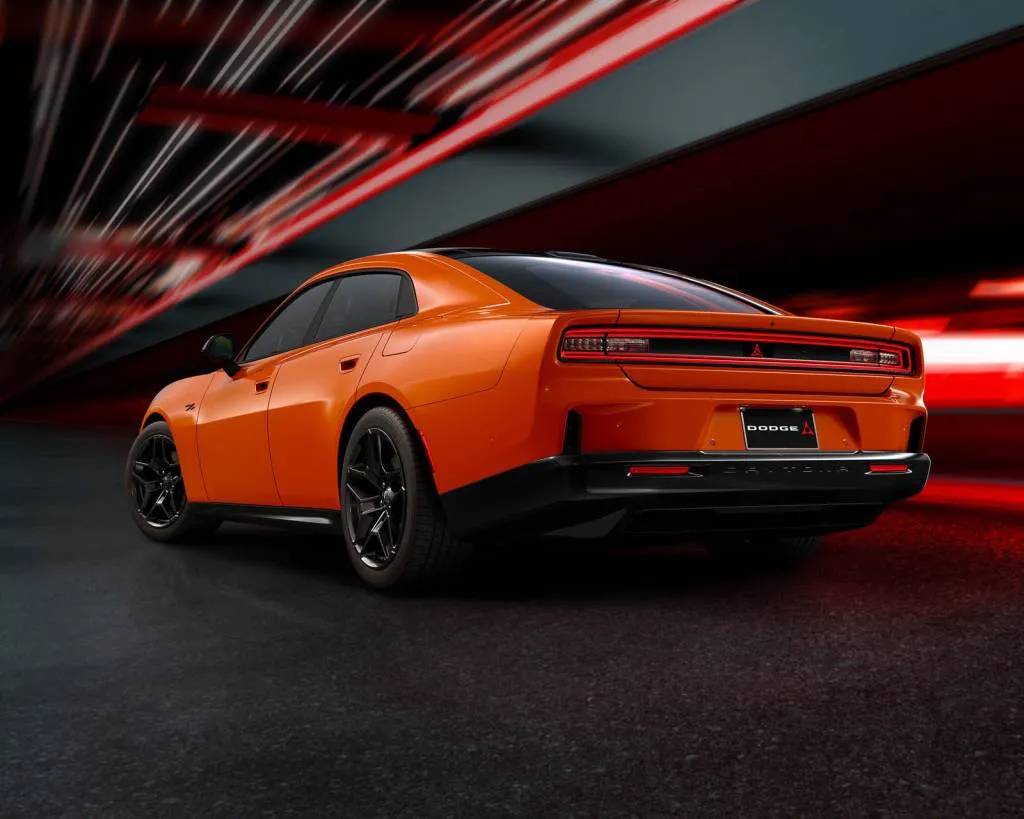
2024 Dodge Charger Daytona
But Hellman, who previously oversaw the Challenger and Charger model lines for eight years, sees it as more than a bridge-building gimmick. “I think it’ll become one of those things that, as the EV market shifts, helps you find that familiarity,” Hellman said. “The sound is such an important piece for Dodge and for muscle cars. It’s something that we’ll continue to lean into and develop.”
“The way it looks, the way it sounds, we created something that no one else has done,” he said. “I don’t think I’ve heard anyone that even had a slight hesitation when they’ve heard it and seen it in person.”

Telo electric truck costs $41,520 for 260 miles of range
California-based Telo Trucks on Tuesday confirmed a lower base price for its space-efficient MT1 electric pickup.
When the MT1 was unveiled in 2023, Telo said it would launch in dual-motor all-wheel drive form at a cost of $49,999 before incentives. The truck’s configurator has now gone live and shows a single-motor rear-wheel drive base model with a $41,520 starting price.
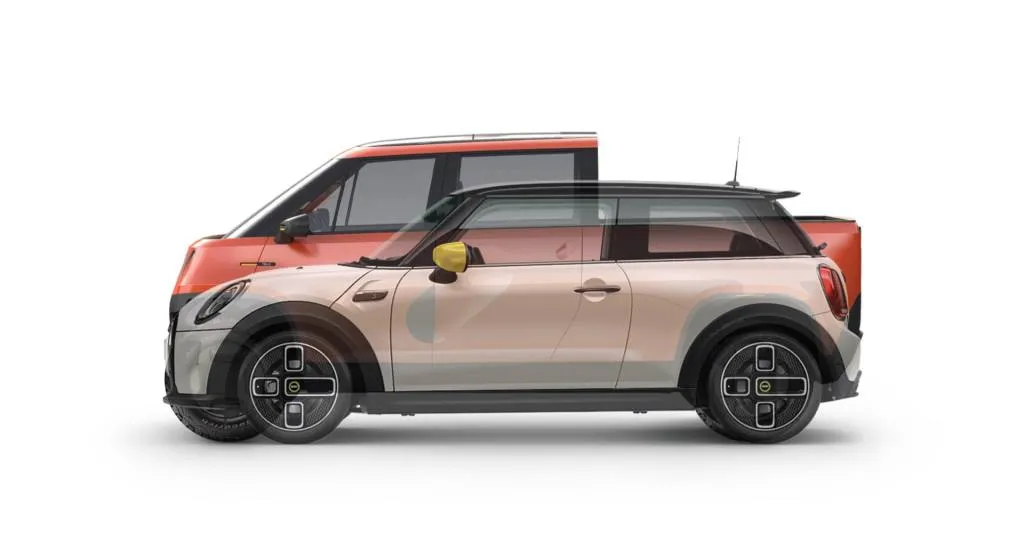
Telo truck vs Mini Cooper SE
The base MT1 develops 300 hp and Telo estimates 260 miles of range from its Standard battery pack. A Long Range pack delivering an estimated range of more than 350 miles is also available for an additional $3,980, while the 500-hp dual-motor powertrain costs $4,769. This enables maximum payload and towing capacities of 1,600 pounds and 6,600 pounds, respectively.
Sign up for Newsletter
Range estimates are the same regardless of powertrain. Telo previously said the Long Range pack would have a 106-kwh capacity, but has not confirmed a capacity for the Standard pack. It’s also said that, with the bigger pack, the MT1 will be able to recover 210 miles of range in 20 minutes when DC fast-charging.
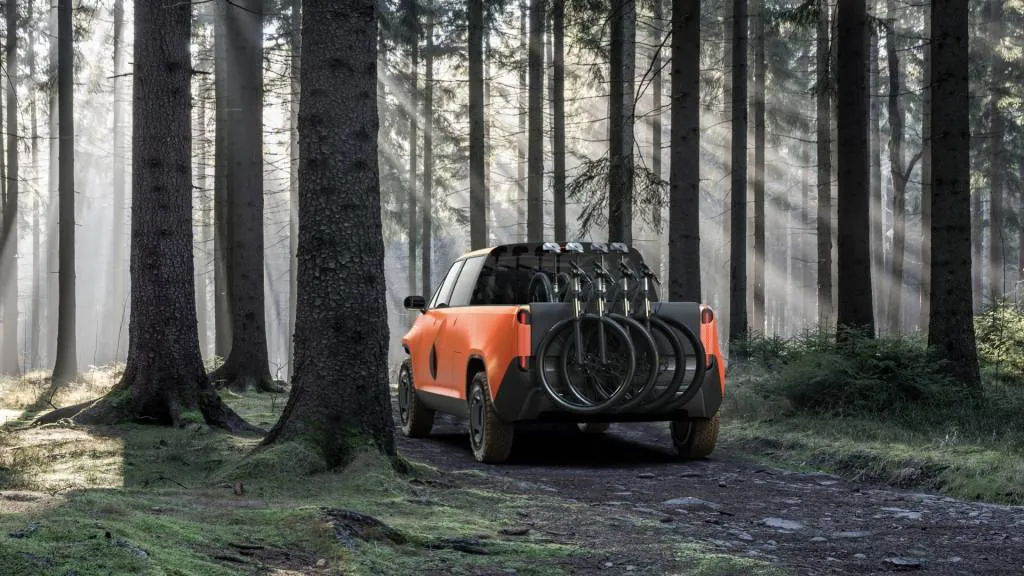
Telo truck (rendering)
Telo is still accepting reservations for $152—the length of the vehicle in inches. That’s the same as outgoing Mini Cooper SE two-door hatchback, yet the MT1 has room for five adults and a 60-inch bed, which is larger than what you get in a Rivian R1T. A midgate allows long objects, including a 9-foot surfboard or a 4-by-8 sheet of plywood, to fit behind the front seats, Telo claims.
Telo claims to have 3,700 reservations so far, and aims for a press launch event in early 2025. But, as Canoo and Alpha Motors have shown, showing off an attractive small electric pickup and actually getting it into production are two entirely different matters.
Pagani Utopia recalled because of airbag issue
 The Pagani Utopia is a rare, hand-built supercar, but even it has succumbed to a recall. Pagani issued a recall for the V-12 supercar due to a manufacturing issue with the passenger-side dashboard panel, which may cause the airbag behind the panel to fail to deploy correctly in the event of a crash. The panel is made from carbon fiber, and a…
The Pagani Utopia is a rare, hand-built supercar, but even it has succumbed to a recall. Pagani issued a recall for the V-12 supercar due to a manufacturing issue with the passenger-side dashboard panel, which may cause the airbag behind the panel to fail to deploy correctly in the event of a crash. The panel is made from carbon fiber, and a…

GM selling its stake in Michigan battery factory to LG
General Motors and LG Energy Solution dropped two noteworthy pieces of news Monday.
In separate announcements, GM said it planned to sell its stake in a Michigan joint-venture battery factory to LG, while the companies also agreed to a continued technical partnership for development of prismatic cells.
Pending closure of the transaction, which is expected in the first quarter of 2025, GM said it anticipates recouping its investment in the Lansing, Michigan, plant, which the automaker said is nearly complete but is awaiting installation of equipment. The plant was said to cost $2.5 billion when first reported in 2022, with GM and LG splitting that amount.
GM said the transaction would not change its ownership interest in the Ultium Cells LLC joint venture with LG that the plant is a part of. And so far there are no plans to change the ownership status of Ultium Cells plants in Warren, Ohio, and Spring Hill, Tennessee, according to the automaker.
Sign up for Newsletter
In what is considered a separate matter from GM’s divestment in the Michigan battery plant, the two companies will also extend an existing technical partnership to include prismatic cells for future GM electric vehicles.
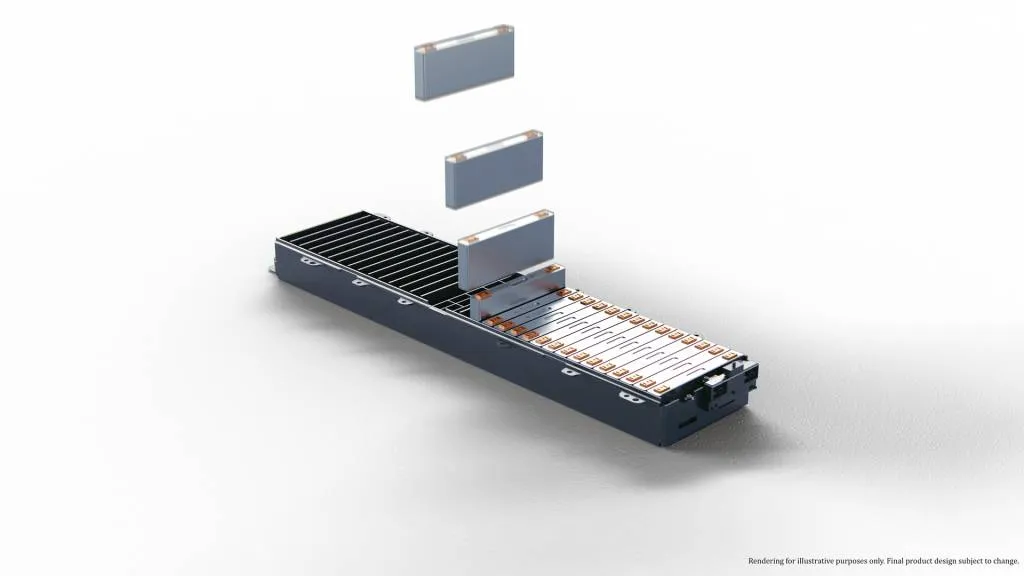
General Motors and LG Energy Solution partner on prismatic battery cells
GM has for the moment standardized its EV hardware around pouch cells, which are currently being manufactured at the existing Ultium Cells LLC plants in Ohio and Tennessee. But the automaker said it aims to “diversify its supply chain, leveraging multiple chemistries and form factors.”
This is something GM has been investigating for awhile. In 2023, CEO Mary Barra noted that GM was flexible on battery-cell format and said the automaker was looking into both prismatic cells and cylindrical cells, albeit with no definitive plans to use either.
The automaker is now saying that prismatic cells could provide packaging advantages, as well as simplified manufacturing by reducing the number of modules in a battery pack. And LG already has experience with prismatic cells, GM noted.
Some retrenchment was likely after initial struggles with GM’s EV ramp-up. The automaker earlier this year backed away from a previous target of having production capacity for one million EVs by 2025, with Barra saying the market wasn’t developing as anticipated. GM’s own EV production issues might have contributed to that as well, although increased EV deliveries beginning in Q2 indicated the automaker was turning a corner.
Lamborghini Temerario with over 1,000 hp probably in the pipeline
 The Lamborghini Temerario could potentially pack over 1,000 hp in a future hardcore variant Lamborghini considered V-6 and V-10 engines before deciding on the V-8 for the Temerario The Temerario is priced from $361,621 in the U.S., including destination The Lamborghini Temerario debuted in August as the successor to the Huracán and already…
The Lamborghini Temerario could potentially pack over 1,000 hp in a future hardcore variant Lamborghini considered V-6 and V-10 engines before deciding on the V-8 for the Temerario The Temerario is priced from $361,621 in the U.S., including destination The Lamborghini Temerario debuted in August as the successor to the Huracán and already…
Telo’s tiny electric truck brings 260-mile range for $41,520
 Telo’s MT1 electric pickup truck measures just 152 inches long, or about the same as a Mini Cooper The MT1 is currently scheduled for launch in early 2025 The MT1 promises up to 500 hp and more than 350 miles of range Pickup trucks have grown in size with each generation, but an electric vehicle startup called Telo wants to reverse that trend with…
Telo’s MT1 electric pickup truck measures just 152 inches long, or about the same as a Mini Cooper The MT1 is currently scheduled for launch in early 2025 The MT1 promises up to 500 hp and more than 350 miles of range Pickup trucks have grown in size with each generation, but an electric vehicle startup called Telo wants to reverse that trend with…
2025 Subaru WRX lineup drops base car, jumps $3,065
 The 2025 Subaru WRX sees an effective $3,065 price increase because of the deletion of the base model from its lineup. The least-expensive WRX is now the Premium grade, which starts at $36,920 with the mandatory $1,170 destination fee. That’s compared to $33,855 for the 2024 base model, with $50 of that difference due to a higher destination fee…
The 2025 Subaru WRX sees an effective $3,065 price increase because of the deletion of the base model from its lineup. The least-expensive WRX is now the Premium grade, which starts at $36,920 with the mandatory $1,170 destination fee. That’s compared to $33,855 for the 2024 base model, with $50 of that difference due to a higher destination fee…
Lotus open to Emira hybrid as electric successor pushed back
 Lotus plans to launch hybrids to join its EVs The company says it is open to launching an Emira hybrid Lotus is working on an electric successor to the Emira, but the launch may be delayed Lotus not long ago planned to exclusively launch electric vehicles, leaving the Emira sports car as its last vehicle equipped with a gas engine. However, the…
Lotus plans to launch hybrids to join its EVs The company says it is open to launching an Emira hybrid Lotus is working on an electric successor to the Emira, but the launch may be delayed Lotus not long ago planned to exclusively launch electric vehicles, leaving the Emira sports car as its last vehicle equipped with a gas engine. However, the…
Genesis teases LMDh race car
 Genesis has provided the first glimpse of its LMDh race car, as well as a hint at where it will compete. The luxury brand recently posted a teaser sketch on its Instagram page, which was reposted by the official page of the FIA World Endurance Championship (WEC). LMDh cars are currently eligible for the WEC Hypercar class, as well as the GTP class…
Genesis has provided the first glimpse of its LMDh race car, as well as a hint at where it will compete. The luxury brand recently posted a teaser sketch on its Instagram page, which was reposted by the official page of the FIA World Endurance Championship (WEC). LMDh cars are currently eligible for the WEC Hypercar class, as well as the GTP class…






